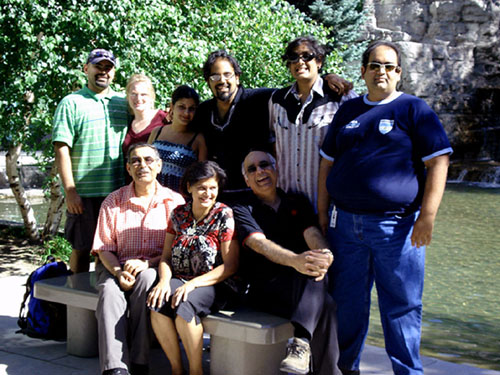Alutrint aluminum smelter is simply the worst economic fit for the Republic of Trinidad and Tobago.
It is an economic bust. It is destructive to human health. It is an ecological nightmare. It prevents the evolution of a suitable and lucrative economic fit for the Republic.
First, let us look at the basic costs of Alutrint. These are costs to the taxpayer, the ultimate stakeholders of this project, since Alutrint is now 100% owned by the Republic.
We would pay for the aluminum port. We would pay for the power plant. We would pay the billions for the Chinese loan for the proposed smelter. We would pay billions on the gas subsidy; this project would consume huge amounts of non-stranded increasingly scarce gas; the opportunity cost of this gas, the international price minus the rate to Alutrint, would run into tens of billions over the period of forty to fifty years.
We would have to put on the public’s cost accounting sheet the millions of dollars for community relocations; in addition to the communities already located, more and more residents are demanding relocation.
We would have to include the millions of dollars in infrastructural costs: the burial and compaction of three water- producing dams; the running of gas lines; the clearance of 1000 acres of forest; the diversion of the Vessigny River; the capping of dozens of oilwells; the removal and then replacement of a buffer zone etc. We would have to include also the cost which would make Alutrint permanently non-competitive.
Remember, this company is state-owned. It has not managed even a snow-cone cart; it is a new company. It is not, like all major players in this globally strategic industry, vertically integrated: we do not own bauxite mines, alumina processing facilities, other raw material chemical and minerals which go into processing aluminum.
We would have to pay international market prices for all these inputs. Additionally, we would have to pay the hundreds of millions, perhaps billions, of dollars in the storage, transportation, and treatment (outside of the Caribbean), of the highly toxic Spent Pot Lining.
This is a recurrent cost over the period of forty to fifty years. We would have to pay the millions of dollars in decommissioning the plant.
Then there are the double-digit millions of dollars: the cost of scores of consultancies, legal bills for three silks and more; the costs of technical services for example soil testing and engineering; administrative cost: to National Energy Corporation and National Gas Company, the Ministry of Energy, the Environmental Management Authority; payment of salaries of top management of Alutrint over the last five years; the cost of managing monitoring and mitigation measures: twenty-odd EMA personnel over the course of forty to fifty years.
Propaganda costs are also significant: the bussing and refreshing of supporters, television features, full-page newspaper ads, a newsletter, sponsorship of local teams and events, the hosting of two national symposia to justify the project.
What figure must we cost ourselves, additionally, for the degradation of lungs, pancreas, other vital organs of the children, women and men of the Republic?
What must we put into our accounting sheet for the destruction of 1000 acres of seaside forest, with its farms, beekeeping industry, forest occupations like hunting and fishing? What figure must we cost ourselves for the destruction of three water-producing dams?
For the destruction of natural springs, the degradation of the Vessigny River and Beach, for the long-term damage to soil, water, the air? What figure must the cost accounting show for the millions of tons of carbon that would be emitted?
Each year the power plant would emit 770,000 tons and the smelter 250,000 tons of carbon into the atmosphere.
To top it all, SURAL, the 40% partner of Alutrint has pulled out of the project. SURAL was to contribute downstreaming and international marketing expertise.
Second, the ‘NEC/ NGC policy’ of Chinese Management Local Labour as promised by NEC three years ago has been busted: the Chinese, as part of its loan stratagem has demanded 1500 jobs for Chinese for the smelter construction; 400 would go to locals.
The future is clear. Alutrint, even if it doubles the size of its 125,000 ton per year facility, cannot viably compete on the global market for aluminum. What this company will attempt to do is to hide the real costs of the project.
Then they will pass on marketing and the local aluminum economy to Chinese ownership. This means that we pay the costs, the financial, the health, the social and the ecological, and the Chinese reap the benefits. Pure and simple.
In real terms we would own the cost of Alutrint only; the Chinese would own the profits. Meanwhile, a better economic fit - for example, a photovoltaic solar cell industry for Trinidad and Tobago, on the very spot where they propose to put Alutrint, an industry capable of generating 5000 jobs, with positive health, economic and ecological impacts - lies dormant, un-evolved.
A proposal for this industry has been lying on Professor Ken Julien’s shelf since November 2006.
Sincerely,
Wayne Kublalsingh



No comments:
Post a Comment